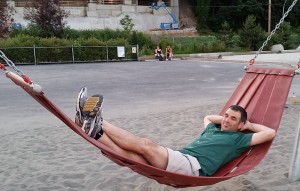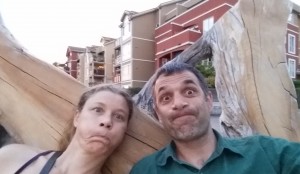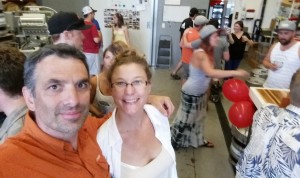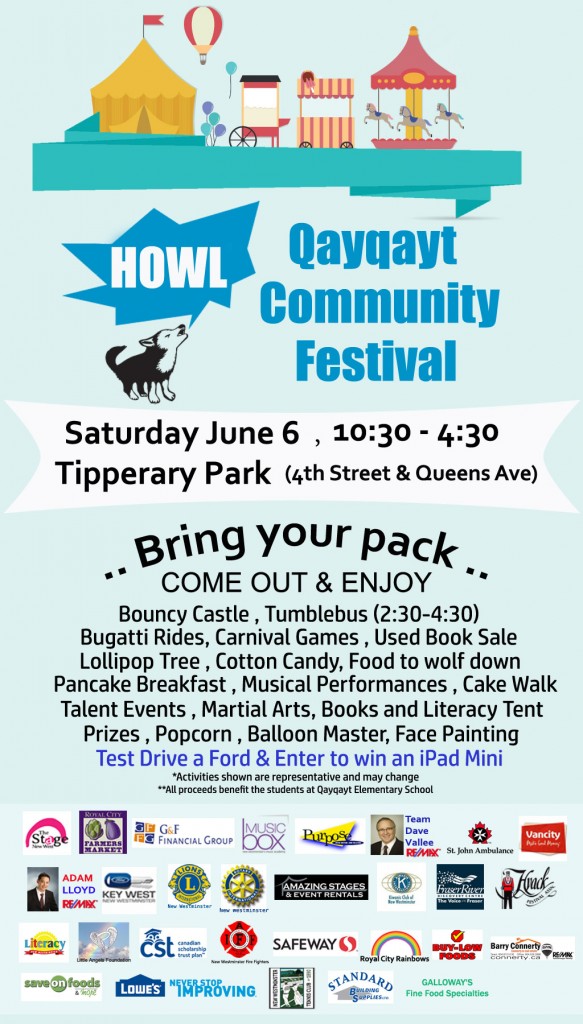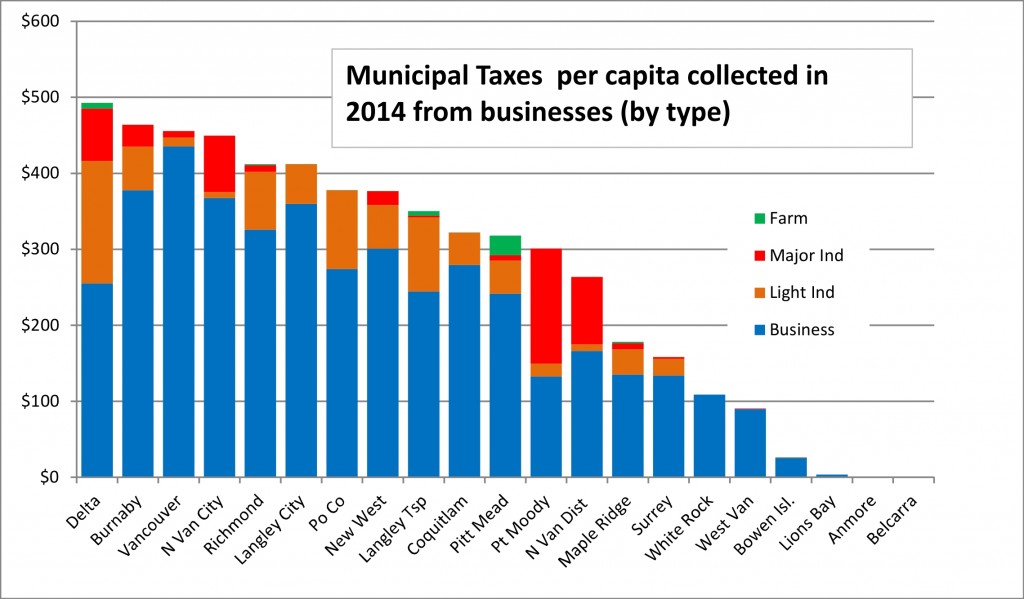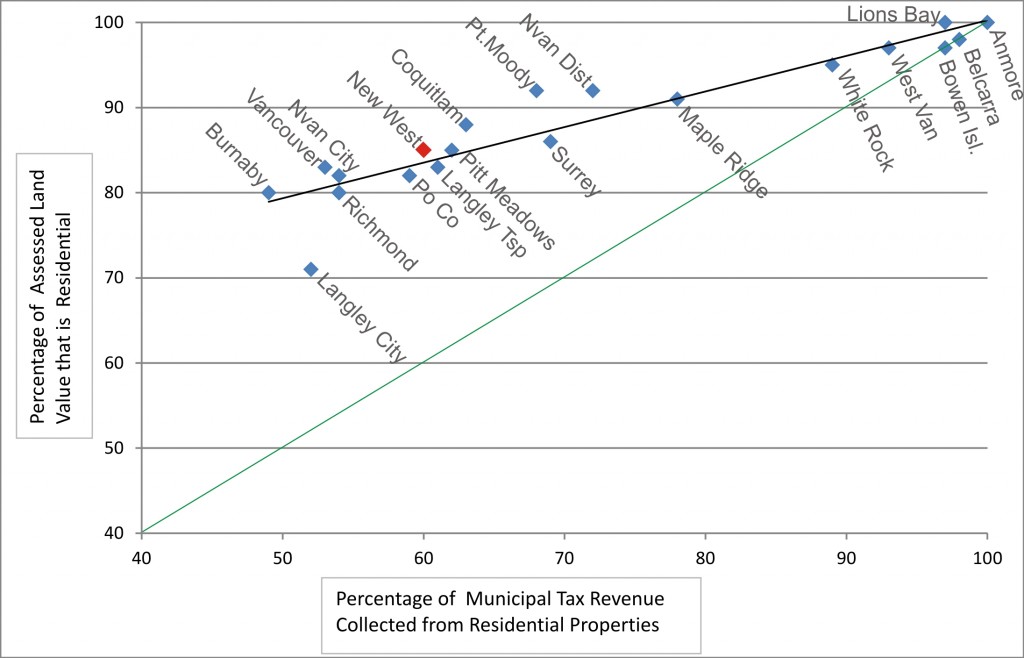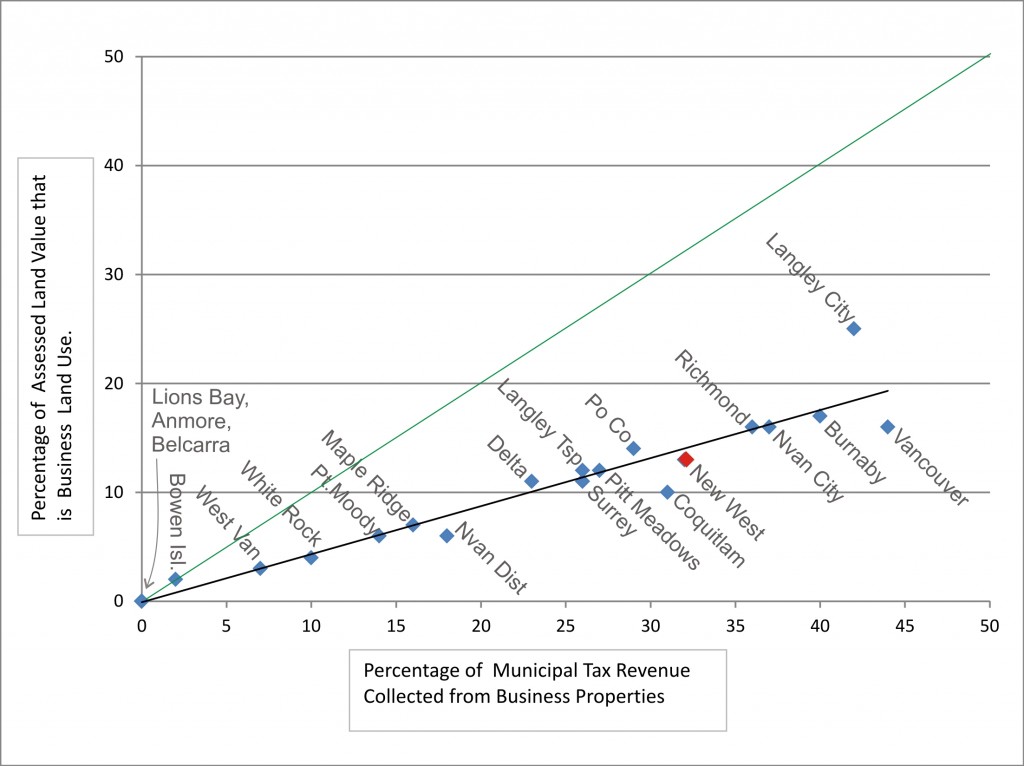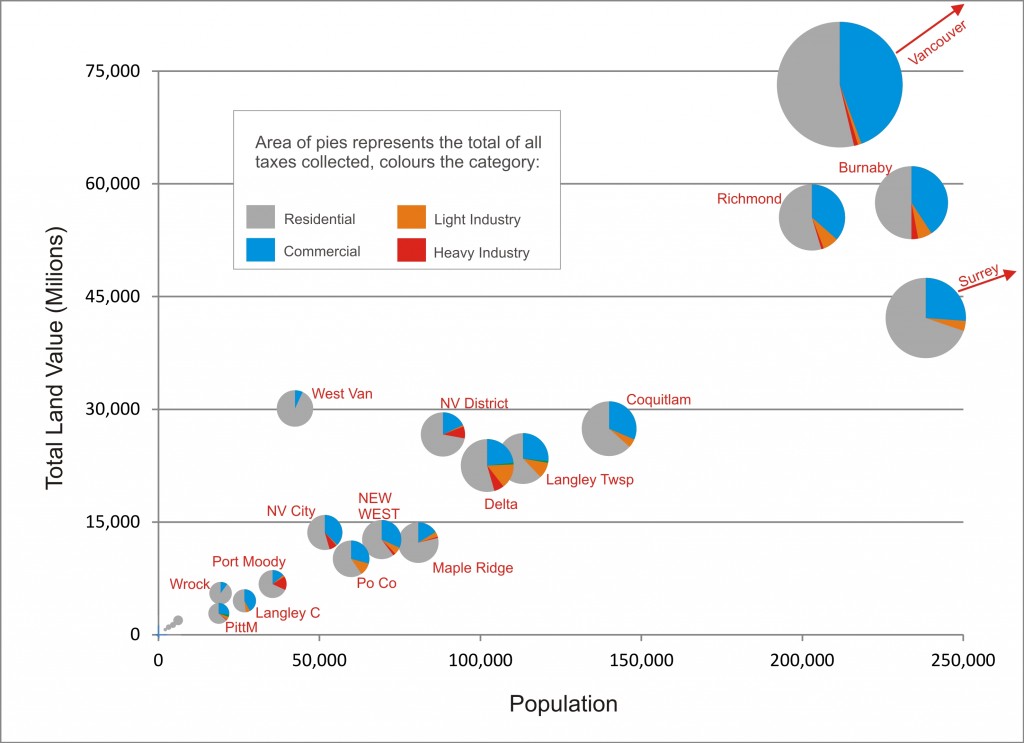Last council meeting of the Month, which means we had a Public Hearing on some of the pent-up Bylaws from the last month or so.
Zoning Amendment Bylaw No. 7758, 2015 (646 Ewen Ave)
This is a proposal to build a largish single family home on a vacant property that previously had a single family home, but is zoned for commercial use. It is in a neighborhood dominated by largish single family homes, and although the lot coverage is higher than ideal, the proponent is building a green roof on their accessory building, and is maximizing the infiltration of the remaining permeable surfaces. The Residents’ Association and the APC were OK with the development, no-one showed up to oppose it at the Open House, and no-one came to the Public Hearing.
I had no reason to oppose this development.
Zoning Amendment Bylaw No 7760, 2015 (328 Holmes Street)
This is a proposal to split a largish residential lot on the steep part of Holmes Street (ed: Is there any part of Holmes that isn’t steep?) and build two homes where there is currently one. The resultant homes are similar to others in the area and around town being built on RS-5 zones, and with an accessible back alley, it makes the street presence nicer. The Residents’ Association did not oppose the idea, and the only neighbours who provided opinions at the Open House were in favour. We received two pieces of correspondence opposing the subdivision, including one from a property that had previously been similarly subdivided. The primary concern appeared to be laneway traffic increases.
I had no reason to oppose this subdivision, as it is completely in character with what has been happening in the neighbourhood over the last decade. It is a pretty sensitive infill of density in a single family neighbourhood. There will be at least one very large tree lost in this development, which irritates me, but until we get a Tree Bylaw implemented in New Westminster, there is not much I can do about that without being unfairly punitive to particular owners. So no opposition here.
HRA Bylaw No 7736, 2015 and HD Bylaw 7737, 2015 (420 St. George St.)
This proposal is to restore and protect the 1890 Burton Taylor house (no, not that Burton-Taylor). The lot would be subdivided, with a second infill house built on the slightly-non-conforming second lot. The Community Heritage Commission, Advisory Planning Commission, and neighbourhood have all expressed approval for the plan, and the one initially-opposing neighbor was satisfied by a change made by the proponent to protect building separation between the neighbouring lots.
It does make Council life easier when neighbouring property owners write short letters of support for projects like this. It is just human nature that we are quick to write letters of opposition, but slow to write letters of support (an old axiom from election turnout math: people rarely line up to say “good job”), so the support letter carry a lot of weight.
No-one showed up to oppose at Public Hearing, and I have no reason to oppose this application.
HRA Bylaw No. 7712, 2015 and HD Bylaw 7713, 2015 (327 Fourth Street)
This proposal is to restore the 1913 Bell Residence in Queens Park, and to divide the large lot upon which it is located to facilitate the building of a second home on the back. The second home would face Pine Street, making it similar to the majority (6 of 8) of houses on that block of Pine. The restoration itself will be an extensive one, bringing some of the former glory to a house you might look at no and wonder if it is really a “heritage asset”.
The project was generally favoured by the Advisory Planning Commission, the Community Heritage Commission or the Residents’ Association, and plans were adjusted to respond to some of the more specific concerns raised by those groups. I am glad to see the plan for the new building has been voluntarily changed to protect a mature evergreen on the site. Some issues raised on correspondence (“we want no new homes built in our neighbourhood”) cannot meaningfully be addressed, while others (concern that restoration will not be completed in a timely manner) are addressed in the Agreement. There were interesting “design” issues raised that are worthy of discussion in the Queens Park Heritage Study context, but as the Local Government Act reads, we are really limited on being able to dictate “design” of single family houses.
We received one letter in opposition against all subdivision of single family lots, and no presentations at Public Hearing other than the Architect. I have no reason to oppose this application.
Zoning Amendment Bylaw 7765, 2015 (Commercial above grade at Brewery District)
This change would provide Wesgroup more flexibility in how they meet market demands while developing the last three high rise buildings on the Brewery District. Currently, the new buildings could be residential with commercial (retail or office) permitted only on the ground floor. This change would allow them to build more than one floor of commercial within the new buildings, if the market exists.
This does not come with increased building heights or overall density for the development, and the shift to commercial from residential would have to include providing parking and traffic management changes concomitant with commercial development.
There was a concern raised at Public Hearing that this might mean the three buildings will be 18 story office towers. I don’t think that is likely, and I’m not sure it would be a terrible thing, but providing for more flexibility towards employment generating space around a SkyTrain Station is something I’m happy to support.
After the Public Hearing, we dropped immediately into our Regular Meeting, where (after doing the Third Reading of the Bylaws from Public Hearing) which actually continued the public participation theme with Opportunities to be Heard on 4 Development Variance Permits and Development Permits in Queensborough:
DVP 00595 / DPQ 00056 (620 Salter Street);
DVP 00584 / DPQ 00057 (188 Wood Street);
DVP 00592 / DPQ 00049 (240 Jardine Street);
DVP 00594 / DPQ 00054 (843 Ewen Avenue):
Only the last of the four had anyone come to address Council. There were two concerns raised, that the separation between buildings was not sufficient for safety, and that tandem parking did not work. The first was well addressed in the report (the space was not a concern for engineering or fire, and the separations in the order of 30 feet were not a concern). The second was interesting, but I note that the developer was only relying on 13 tandem spots to make the “required number” by the zoning, but were also providing an excess of 25 more tandem spots – about 20% more parking was being planned for than the development required.
As we met in Committee last week, but did not have an evening meeting, we had Committee of the Whole Recommendations to address from June 15.
2015 Community Grant Request
The Canadian Lacrosse Hall of Fame asked for a grant to help with facility costs for their annual fundraiser.
Generally, I am reluctant to approve these grants outside of the normal grant process – there needs to be a case made that there is an exceptional reason. Something like a narrow matching grant window that must be met, or a change in programming outside of the control of the applicant. There is a reason we have a formal application process and deadlines – so that all organizations looking to partner with the City have equal access and opportunity, and the external grant committee exists to provide arms-length evaluation of the merit of the many applications we receive.
In this case, I think it is an exceptional year for the CLHF, with the move to the anvil representing probably the biggest event to happen to the Hall since its inception. I hope they have a successful fundraiser and continue to contribute to the unique and historic culture of New Westminster.
I also recommended that staff develop a system where a meeting of the Granting Committee could be called on an ad-hoc basis to evaluate these requests that occur outside of the regular grant cycle. I don’t want to encourage this type of application, where organizations come to Council with hat in hand in place of the relatively rigid and accountable process we have developed. It is better that these types of applications go through the same scrutiny as our other grant applications, even if they are out of the regular timing cycle.
Request for Reduction in Property Taxes.
A proponent building a Secured Market Rental Housing project asked the City to add property tax relief to the incentive package for building these types of development. On looking over the incentives provided by the City, I think they are generous, and we are seeing applications for these types of developments, suggesting we are achieving the goals of the incentive program as is. I don’t think one-off property tax reductions are a good policy for the City to start creating.
Statement of Financial Information Report
This is the simplified financial information report provided to the province every year. The City’s finances are in good stead, with solid (but not excessive) reserves, and a very manageable debt load overall in comparison to our assets. The completion of the Anvil Centre and sale of the Office Tower both create interesting shift in numbers this year, just because their value is so high relative to our usual revenue flows, but nothing in this report concerns me in the long term when looking at the 5-year financial plan.
Investment Report
As I mentioned in an earlier blog, the City has about $80Million in various reserves. This report tells us where they are an how the investments are doing. This leads me directly to my Motion under New Business below, as I think we need to talk about where we invest, and start putting our money where our policy is.
Gateway to Downtown Public Art
We are getting another piece of Public Art installed on Columbia Street at the east end of Downtown. I’m not an Art Critic, but I like this piece called “Rorshach/Sentinel”, as it is hard to tell what it is supposed to be at first glance, but once you see it, you just can’t miss it. This installation was chosen from several submissions by our Public Art Advisory Committee and paid for out of our Public art Reserve fund.
Correspondence
Then we also received some correspondence.
On to June 22 Committee of the Whole Meeting, where we moved the following Recommendations:
Queensborough Special Study Area
This proposal for the development of the triangle bounded by Ewen, Stanley, and Duncan Streets in Queensborough will be a pretty big change in how the east part of QB operates. Instead of the Animal Shelter, tow yard, and a few dispersed homes, this area will see about 175 new family-friendly residences and (this is the good part) about 50,000 square feet of retail anchored by a neighbourhood grocery store. This will do a lot to make the Port Royal neighbourhood more convenient for a lot of people.
The plan is more than houses and stores, though, with Mercer being re-imagined as a pedestrian-friendly “high Street”, and lots of greenways that will preserve the habitat along some of the valuable watercourses (yes, I know we call them “ditches”, but they are actually important habitat for vertebrates). The retail treatment is not your typical strip mal, but will address the streets around in a very pedestrian-friendly way. I am pretty happy with the preliminary layouts.
My remaining concern is on the transportation realm. The intersection of Furness where it links Ewen to Duncan is going to be really sensitive –a pinch point and the only access to home for a great many Port Royal residents. Also, the ingress/egress around the medium-density residential area also looks limited – the left turn onto Duncan from Stanley being a challenge, and with Ewen and Duncan already seeing a lot of traffic-related complaints with adjacent industrial traffic and Furness and Ewen being a pinch point for a lot of Port Royal Residents.
There is some work to do here, on part of City staff and the main developer, and there will be a lot of public consultation involved in the near future. People of Queensborough, keep your ears to the ground!
Mayor’s Task Force on Housing Affordability
One of 4 task forces set up by the Mayor at the beginning of his new term, this one is addressing what might be the highest-profile urban issue in the Lower Mainland today (sorry transit referendum).
The Task force has already made progress on leading a housing needs assessment for the City, identified an inventory of City-owned lands where an affordable housing project may be piloted, and has laid the groundwork for hiring a Housing Consultant to help with program delivery and created recommendations to council for new forms of affordable housing in the City. Which brings us to…
RFP for the Development of Affordable Housing
The Task Force has identified two City-owned lots in residential areas that might be appropriate for small-scale affordable housing projects, be they rental or ownership. This Request for Proposals will go out to developers (including not-for-profits) to make best use of these two lots so that housing for low-to-moderate income individuals can be developed.
The City is not providing a lot of guidance here towards how these homes will be built, sold or rented, and how the affordability aspect will be preserved for perpetuity. The thought being that the developer or not-for-profit can exercise their experience and judgement to create a solution that meets all of the criteria, and the City can facilitate that through providing land and any administrative/logistical support as is appropriate.
I look forward to seeing what types of approaches are presented when the real experts in this field are given the ability to flex their creative muscles. I’m also happy to live in a City where we attack these issues head-on.
This report is worth reading if only for the amazing table of statistics at the end of the RFP about New Westminster’s current housing situation. I think I’ll need to write another blog post just about that.
Bylaw Notice Enforcement Amendment Bylaw No 7768, 2015 (to amend Bylaw No. 7318, 2009)
We amended this Bylaw back in May, but a clerical error slipped through, and so we need to do it again. I read it this time, I swear (the fine for having a campfire in your back yard is, apparently, $200 for a first offence, which is twice the fine for golfing. Who knew?) We moved consideration of Three Readings.
Zoning Bylaw No. 7767, 2015:
This is a “Housekeeping” Bylaw to fix a few issues with our existing Zoning Bylaw. Nothing too earth-shattering here. We moved consideration for two readings, and recommended it go to Publci Hearing at the next Opportunity, July 13, 2015.
Sale of City Land (327 Fenton Street)
This is a single-family lot in Queensborough that is surplus to City needs and is being sold to the highest bidder, who offered us a fair price. We don’t really have a comprehensive strategy for managing City-owned lands like this, but we have policy that sets out principles that need to be met before we will sell off any City lands. This sale meets those principles. No worries here.
Major Purchases Report
On the other side of the coin, the City bought a bunch of stuff in the first quarter of 2015. All purchases about $100,000 are reported to Council ($50,000 if they are “sole source” contracts). If you’re wondering what kind of things you tax money buys, this is a good report to look at. Amazingly enough, a bunch of it goes right back into the local economy, and not down a black hole.
Bylaw No 7757, 2015: Amendment of the 5-year Financial Plan
Now that we have received audited statements for the end of last year, we need to integrate the accounting adjustments into our 5-year Plan. Of course, we are already adopted the subsequent 5-year financial plan back in May, so…
In defense of the presenter at the earlier Public Hearing on this, without a red-line comparison, it is hard to tell exactly what the changes are here. I was able to compare to earlier financial reporting I had a copies of and which are available on-line (and the changes are not huge), but really, the staff report should include a red-line side-by side comparison, for our benefit, and the for the benefit of the public who might read the report. Hopefully, through our review of Public Engagement, we can make this process clearer in subsequent years.
We recommended the Bylaw that is the 5-year Plan for three readings.
Proposed Budget Process for 2016.
This is an outline of how we prepare the budget over the year, and where the opportunities for Public and stakeholder input is. I like the idea being explored of doing of doing a biennial budget cycle, with only minor adjustments in the off-year. With the new 4-year Council terms, this is completely viable, will free up finance staff and Council to get more involved in longer-term planning, and would open up the timelines as bit to allow for a more open public consultation process.
Stay tuned, as the Public Engagement Taskforce is going to look over this, and there are a couple of citizens on that committee that have a real eye for budgeting process and making it even more transparent.
License Agreement Renewals
There are various not-for-profits that lease City space at non-market value, as is allowed under the Community Charter if they provide unique or valued services to the community. Of course, we need legal agreements and insurance and indemnity and such. This report is just to provide a bit of guidance to the Staff as they work to renew and update the agreements with 6 community organizations.
Heritage Alteration Permit No. 066 (1010B Third Ave)
The heritage homes at 1010 and 1012 Third Ave were part of a Heritage Revitalization Agreement last year, where the two houses were protected in exchange for the creation of a new lot between them, upon which a new house would be built. Part of that HRA was that the new house would reflect the style of the Craftsman 1010 Third Ave.
The owner has now decided to build the new house following Passive House principles, very likely making this the most energy-efficient house ever built in New Westminster. To meet these requirements, a few design changes are proposed, mostly in the shape of the roofline and the windows (which are both rather important to energy efficiency design). As the design of the infill house is part of the HRA, these changes require a change of that agreement.
The Community Heritage Commission was not in favour of these changes, which is a bit of a concern. However, this is an infill house (not one of the two heritage homes), and the changes are subtle enough that the new house will not be radically different than the two adjacent homes. The goals of energy efficiency through leading-edge building techniques meets a lot of the City’s objectives through our CEEP and EnergySave New West.
Interesting to see how our Zoning Bylaw can be shifted to accommodate, or even encourage, the building of supper-efficient homes.
Pattullo Bridge Rehab Work
The Pattullo is going to be undergoing repairs in 2016. People keep asking me why TransLink is spending millions of dollars fixing a bridge that will soon be replaced, and the simple answer is within the definition of the word “soon”. In a best-case scenario (A YES on the referendum, stakeholders quickly agree on design and operation principles, senior governments quickly step in with funding, no unexpected Environmental Assessment delays, etc.), we will not have a new Pattullo Bridge for at least 6 years. More likely, we are looking at 10 years before the new bridge comes on line. In the meantime, the old bridge has to stay standing and safe, and its delaminating desk and failing structural components need to be dealt with.
The City is working with Surrey, TransLink, and the Ministry of Transportation to create a strategy to manage the traffic impacts of reduced lanes and partial closures during this work. We don’t know what those strategies look like yet, but we hope to see a report back in the Fall with ideas about changes we can make in our municipal streets to help keep the impacts from hurting the livability of our neighbourhoods. I am also curious about how TransLink is going to accommodate pedestrians and cyclists during the year-and-a-half closure of the sidewalk.
Stay tuned.
Correspondence
The City of Burnaby sent us a letter informing us of their concerns with the Uber model of “Car Sharing”. We have asked staff to report back to us with comments.
Someone wise (I think it was Umair Haque) once said “If you can pay by Credit Card, it isn’t sharing”. The business model of Uber is to compete with a highly regulated industry by providing an unregulated alternative. That sounds great, except when we realize that regulations often exist for a reason. Would you fly on an unregulated airline or buy dinner at an unregulated restaurant?
There is a fair argument that the Taxi Industry in BC is way over regulated. A market where the license to operate a cab is sold for an order of magnitude more money than the value of the car, and where the business applies to the Province for 16 new licenses to fill a need, and is only awarded two (as happened this year in New Westminster), is clearly a dysfunctional one, but I’m not sure an unregulated market is the best alternative. We live in interesting times.
Appointment to Committee
The representative from Fraser Health to our Community and Social Issues Committee has changed.
We then did a bunch of readings to a bunch of Bylaws, all discussed earlier in public hearing or the Meetings:
Bylaw Notice Enforcement Amendment Bylaw No 7768, 2015 (to amend Bylaw No. 7318, 2009): Received three readings.
Zoning Bylaw No. 7767, 2015: Received two readings and will go to Public Hearing on July 13, 2015. C’mon out and tell us what you think.
Bylaw No 7757, 2015: Amendment of the 5-year Financial Plan: Received three readings.
And, finally, my New Business item:
WHEREAS: The City of New Westminster’s financial assets are invested with the Municipal Finance Authority, which includes pooled funds and direct investment in hydrocarbon extraction and pipeline operation companies;
WHEREAS: The City of New Westminster recognizes the global concern and risks of Anthropogenic Climate Change and has taken efforts to reduce the greenhouse gas impacts of its internal operations and in the community in general, and
WHEREAS: Investments in fossil fuel extraction carry numerous risks, including economic risk to market value of fossil fuel companies based on stranded assets through increased worldwide transition to renewable energy sources, including Canada’s own commitment to moving towards reduced GHG emissions and the G7 commitment to a carbon-free economy by the end of the Century;
THEREFORE BE IT RESOLVED: That New Westminster support ongoing efforts by communities and public institutions across Canada and North America to divest public investments from fossil-fuel related assets by calling upon the MFA to develop a plan to divest from these assets.
I think the resolution (passed unanimously by Council) speaks for itself, and I will talk more about this in an upcoming Blog Post, but if you are interesting in learning about the case for Divestment and the Divestment Movement, you can start here:
“The argument for divesting from fossil fuels is becoming overwhelming”
This is the beginning of an interesting journey, I’m sure.



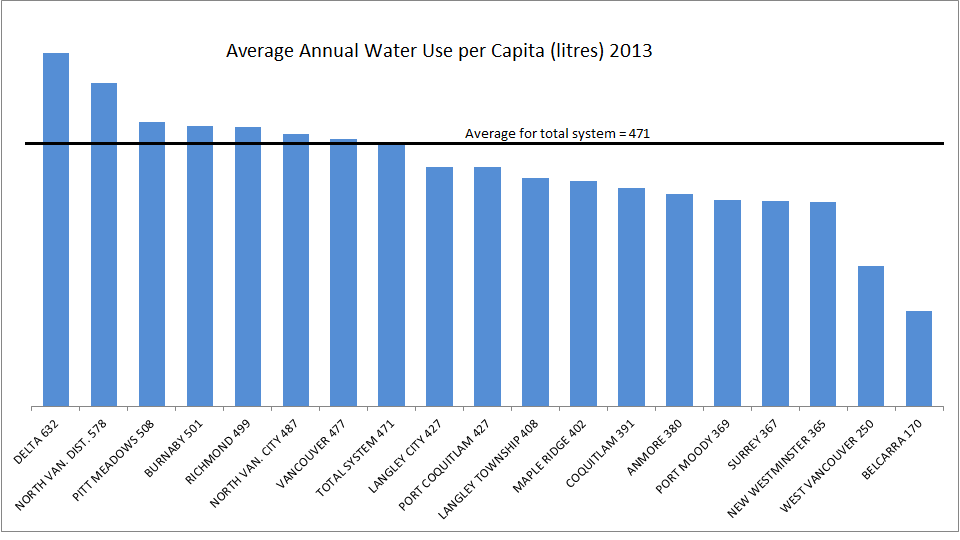
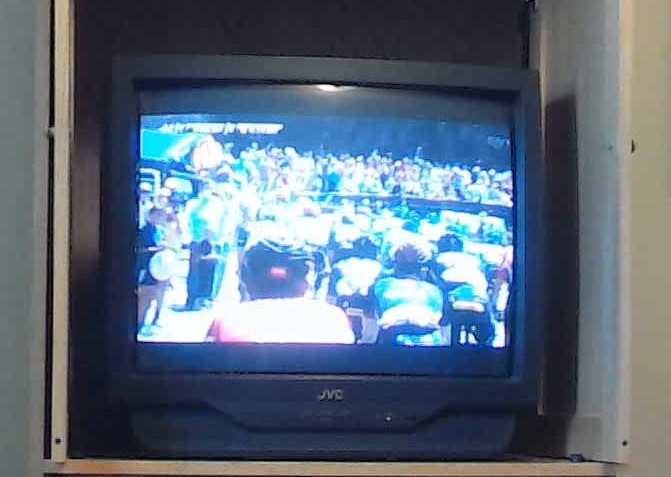
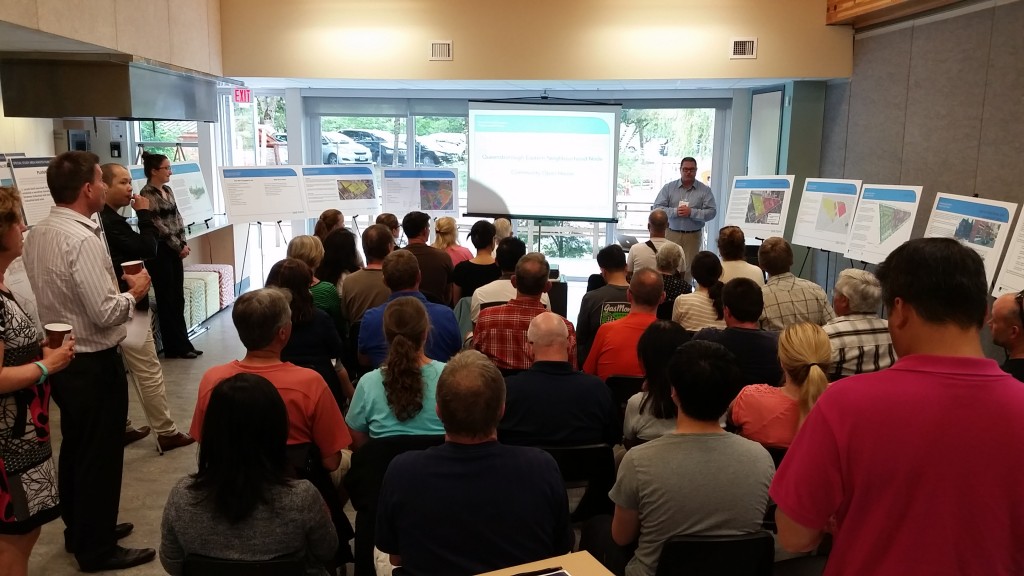
 I was only a little chagrined to see that mine was the only bike in the rack, amongst the couple of thousand students, parents, siblings, supporters and dignitaries at Queens Park Arena that night! Well, I guess it was kind of a fancy-dress occasion.
I was only a little chagrined to see that mine was the only bike in the rack, amongst the couple of thousand students, parents, siblings, supporters and dignitaries at Queens Park Arena that night! Well, I guess it was kind of a fancy-dress occasion.
